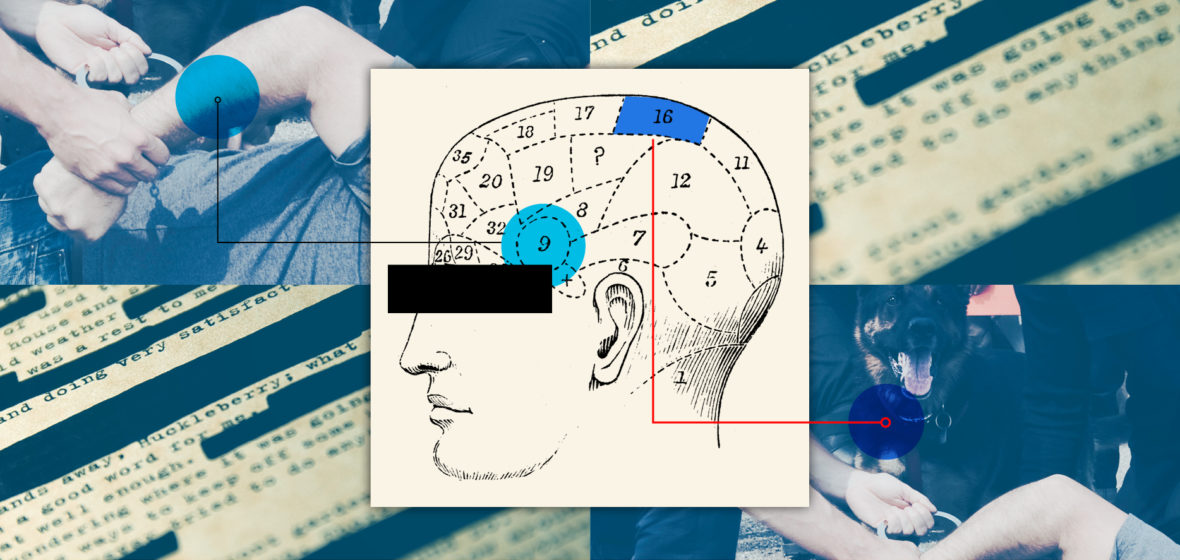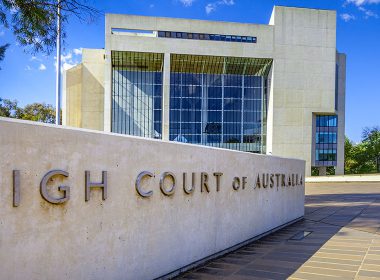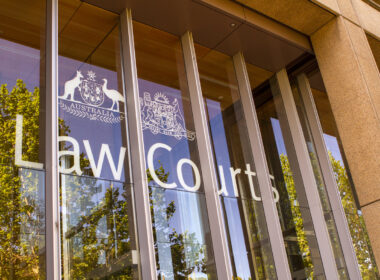Revelations about evidence that the jury in the murder trial of police officer Zachary Rolfe did not hear has ignited the debate about the use of tendency and coincidence evidence in criminal cases. As NSW gets set to review the Evidence Amendment (Tendency and Coincidence) Bill 2020, some remain concerned about the reforms. FRANCISCO SILVA writes.
The fallout from the acquittal of Northern Territory constable Zachary Rolfe, found not guilty by a jury of murdering Kumanjayi Walker, has largely examined what the jury wasn’t allowed to know.
Rolfe’s defence team successfully argued that evidence alleging the officer had been involved in previous violent arrests involving excessive force, did not turn on his body-worn camera, and had lied about his conduct, had the potential to prejudice the defendant unfairly.
Three weeks before the trial, Justice John Burns considered the evidence did “not have sufficient probative value”. He accepted the argument by Rolfe’s defence that the evidence was not appropriate, as no formal findings of wrongdoing had been made against the officer and the allegations were not directly relevant to the death of Walker.
Since 2020, the use of tendency and coincidence evidence in NSW applies only to child sexual offences. As the state prepares to review this law later this year, some experts believe it’s the right time to consider extending its use to other types of criminal cases.
The Evidence Amendment (Tendency and Coincidence) Bill 2020 directly resulted from the Royal Commission into Institutional Responses to Child Sexual Abuse, which concluded in 2017. It allows the use of tendency and coincidence evidence in child sexual assault cases in NSW; the probative value of the evidence does not have to significantly outweigh the risk of prejudice.
“My main objection is it’s just incredibly complex,” Professor David Hamer from the University of Sydney tells LSJ.
“It [adds] to the difficulty courts already have with this area of evidence.”
Hamer worked on reports for the Royal Commission and voiced his criticism in NSW Parliament about the bill. He strongly supports the relaxation of the use of evidence but believes the current measure isn’t the correct approach.
“The reform is making things worse, because it’s limited to child sex abuse cases and doesn’t extend to adult sexual assault that faces similar enforcement problems,” he says.
“Secondly, the reforms only operate on tendency evidence, not on coincidence, and I think that distinction is pretty nonsensical.”
Hamer thinks the reforms should be extended to other prosecutions.
“It’s a major reform … why should it be limited to one narrow kind of evidence and one narrow kind of case? These are serious offences that occur on a very large scale, and they are difficult to prosecute, so there’s good reason to allow the evidence in there. Still, the same applies to adult sexual assault, and there are many other crimes where this evidence could also play a greater role and assist in enforcement.”
On the opposite side of the spectrum, there is concern that lowering the threshold for the admission of tendency and coincidence evidence steers the jury towards biased assumptions. It puts too much onus on jury directions, which the NSW Law Reform Commission observed can “involve close distinctions that jurors … may not necessarily be able to apply easily”.
“This has become so complicated. That’s not because the judges are wrong; the directions are long, drawn-out, and complicated. It is difficult to see how can a jury of non-lawyers can properly understand and apply the directions they are given in respect to tendency evidence” Andrew Tiedt, Accredited Specialist in Criminal Law at J Sutton Associates, tells LSJ.
Tiedt stands in the middle ground. “It’s all about balance,” he says, explaining that while a judge are diligent in seeing the black and white, a jury tends to find the grey areas.
But can a jury properly discern the weight of each piece of evidence presented to them? “You want to ensure that defendants aren’t unfairly prejudiced by evidence coming in,” Tiedt explains.
“On the other hand, all things being equal, you want the jury to hear the full story.”
According to the NSW Bureau of Crime Statistics, in 2018, 91 per cent of defendants in criminal proceedings were found guilty, while only 60 per cent of child sexual assault cases led to convictions. Including tendency evidence, and, in the case of NSW, accepting joint trials, adds relevant information and context the jury needs for a fair ruling.
Professor Jill Hunter from the University of NSW says the acceptance of tendency evidence can create prejudice against the defendant: she says the jury may fail to understand if a state of mind from the past applies to the current crime. It can apply excessive weight to circumstantial evidence, she says, and, perhaps more concerningly, an emotional response from the jury.
While a judge warns the jury not to let their decision be clouded by prejudice, a single piece of tendency evidence, removed from its context, can cloud any other assessment, says Tiedt. “A judge will sum up in a jury trial for at least two or three hours. Do the juries understand and accept and remember all the directions a judge gives them?”
Hunter adds: “Typically, a major concern with tendency evidence is its role in the prosecution case and particularly the danger of unfair prejudice because it often exposes the jury to past criminal, immoral or negative information about the accused and hence exposes the accused to the danger of being judged on the basis of unfair prejudice.”
She thinks if the risk of unfair prejudice is too high, it undermines the justice system’s impartiality. LSJ asks Hunter if omitting tendency evidence could be construed as a form of misleading testimony.
“If you’d asked me that in 1980, I would’ve agreed with you… We are more complex beings than the law relating to tendency and coincidence takes into account,” she says.
“So, I think there is a real danger in creating a miscarriage of justice because of the potential to mislead.”
These concerns were mirrored by the Law Society of NSW, which in 2018 wrote an open letter to the then NSW Department of Justice (now the NSW Department of Communities and Justice) stating that the proposed bill would “neither achieve the goals articulated by the Royal Commission nor create certainty”.
In the opinion of both Hunter and the Law Society 2018 submission, a High Court majority decision in a previous case (Hughes v The Queen) had already “formulated an interpretation of key elements of the Uniform Evidence Law consistent with the goals articulated by the Royal Commission”.
Politically, it is unlikely the amendment will be withdrawn, with the risk of looking soft on tackling child sexual assault. But the review, scheduled for September, potentially opens the door to extend to other similar cases.
Currently, only NSW, ACT and NT have adopted the reforms proposed by the Royal Commission. Victoria and Tasmania are still to adopt them – with other non-Uniform Law jurisdictions looking into adopting a variation of it.
While the use of tendency evidence remains subject to disagreements, consensus abounds on one point: that the law in NSW needs further scrutiny.




